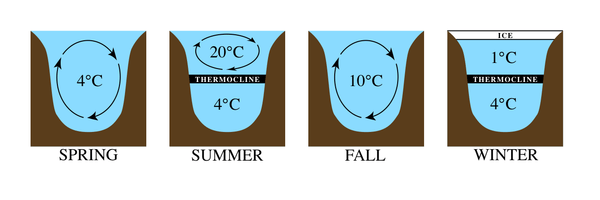Dimictic lake
Dimictic lakes mix from the surface to bottom twice each year. Dimictic lakes are holomictic, a category which includes all lakes which mix one or more times per year. During winter, they are covered by ice. During summer, they are thermally stratified, with temperature-derived density differences separating the warm surface waters (the epilimnion), from the colder bottom waters (the hypolimnion).

Mixing (overturning) typically occurs during the spring and autumn, when the lake is "isothermal" (i.e. at the same temperature from the top to the bottom). At this time, the water throughout the lake is about 4 °C, and, in the absence of any temperature or density differences, the lake readily mixes from top to bottom. These lakes are common in regions with temperate climates.[1]
References
- ↑ Lewis, William M., Jr. (1983). "A revised classification of lakes based on mixing" (PDF). Canadian Journal of Fisheries and Aquatic Sciences. 40 (10): 1779–1787. doi:10.1139/f83-207.
See also
External links
"Circulation: annual patterns of dimictic lakes" at Encyclopædia Britannica Online